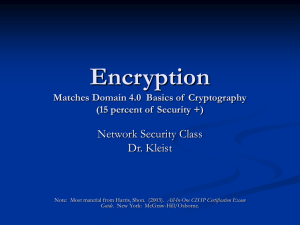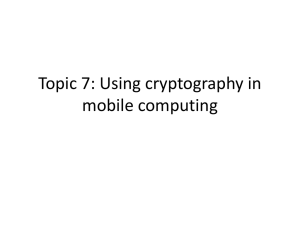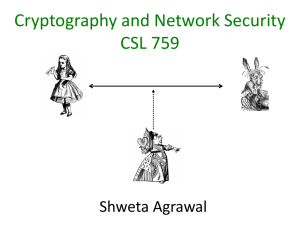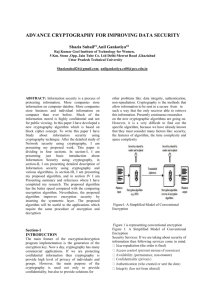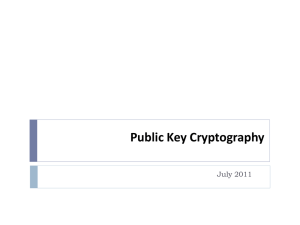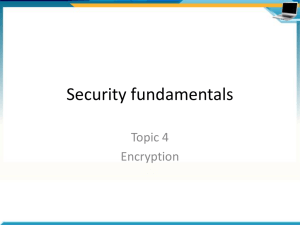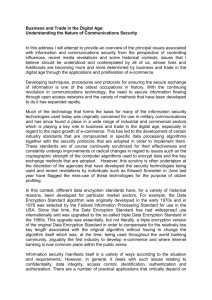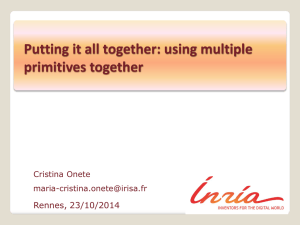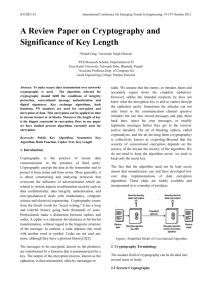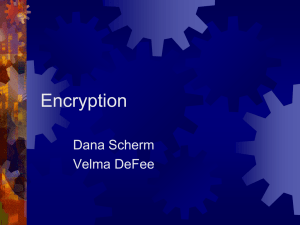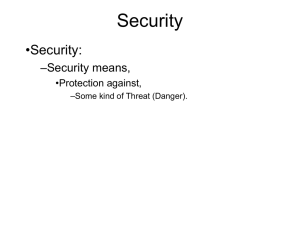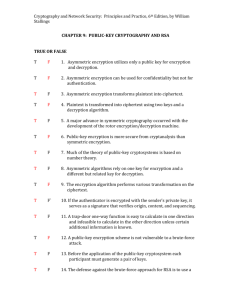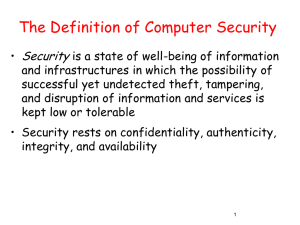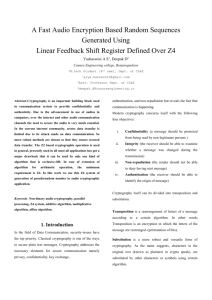Final Project Presentation
advertisement
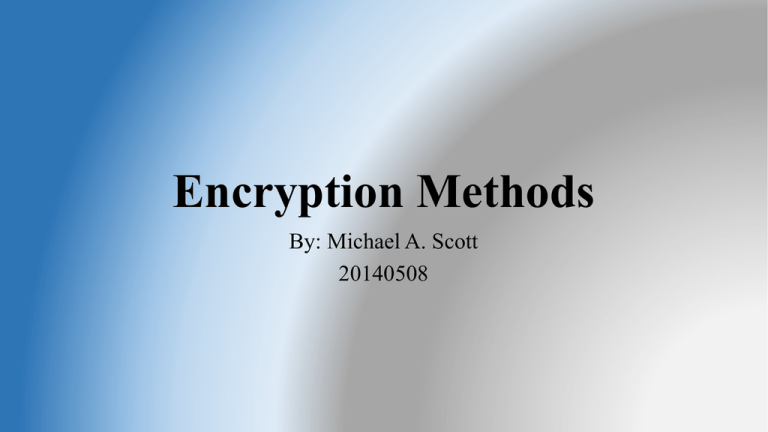
Encryption Methods By: Michael A. Scott 20140508 There are three basic encryption methods: • Hashing • Symmetric cryptography • Asymmetric cryptography. Each of these encryption methods have their own uses, advantages, and disadvantages. All three forms of encryption rely on cryptography, which is the science of scrambling data. Basic Function of Encryption: Plain-text to Cipher-text • People use encryption to change readable text into an unreadable secret format. • Encrypting data provides additional benefits besides protecting the confidentiality of a message. • These advantages include ensuring that messages have not been altered during transit and that they verify the identity of the sender. Hashing Encryption: • Hashing creates a unique, fixed-length signature for a message or data set. • It is very resistant to tampering, but is not as flexible as the other methods. • Hashes are created with an algorithm, or hash function, and people commonly use them to compare sets of data. • Since a hash is unique to a specific message, even minor changes to that message result in a dramatically different hash, thereby alerting a user to potential tampering. Hashing Cont. • A key difference between hashing and the other two encryption methods is that once the data is encrypted the process cannot be reversed or deciphered. • This means that even if a potential attacker were able to obtain a hash, they would not be able to use a decryption method to discover the contents of the original message. • Some common hashing algorithms are Message Digest 5 (MD5) and Secure Hashing Algorithm (SHA). Symmetric Methods • Symmetric cryptography, also called private-key cryptography, is one of the oldest and most secure encryption methods. • The term "private key" comes from the fact that the key used to encrypt and decrypt data must remain secure because anyone with access to it can read the coded messages. • A sender encodes a message into cipher-text using a key, and the receiver uses the same key to decode it. • People can use this encryption method as either a "stream" cipher or a "block" cipher, depending on the amount of data being encrypted or decrypted at a time. Symmetric Cont. • A stream cipher encrypts data one character at a time as it is sent or received • A block cipher processes fixed chunks of data. • Common Symmetric encryption algorithms include Data Encryption Standard (DES), Advanced Encryption Standard (AES), and International Data Encryption Algorithm (IDEA). Asymmetric Forms: • Asymmetric also called public-key cryptography is, potentially more secure than symmetric methods of encryption. • This type of cryptography uses two keys. A "private key” and a "public key" • They perform encryption and decryption. • The use of two keys overcomes a major weakness in symmetric key cryptography, since a single key does not need to be securely managed among multiple users. Asymmetric Cont. • In Asymmetric cryptography a public key is freely available to everyone and used to encrypt messages before sending them. • A different private key remains with the receiver of cipher-text messages, who uses it to decrypt them. • Algorithms that use public key encryption methods include RSA and DiffieHellman.

